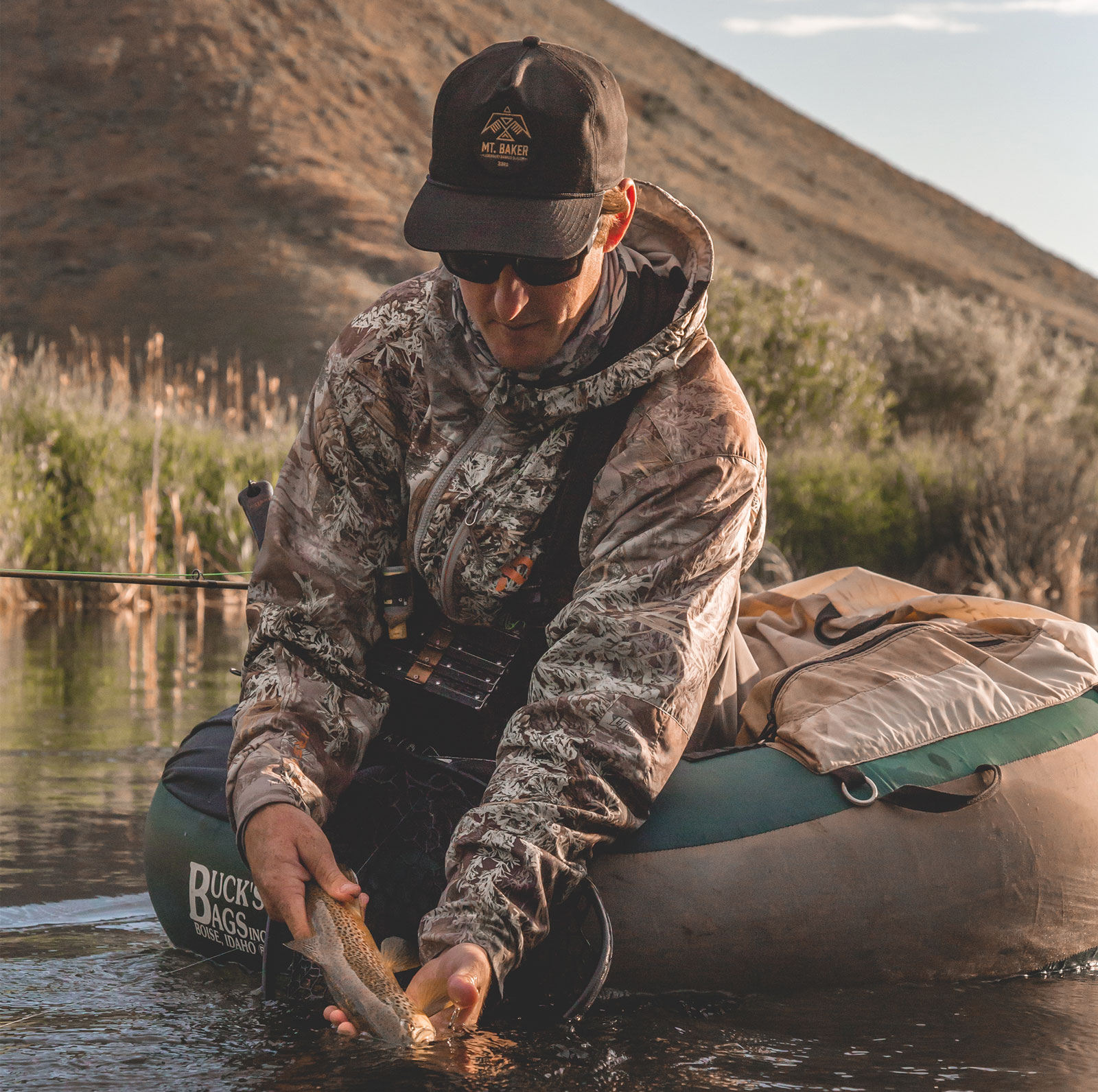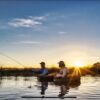“Fly fishing is about adaptation—in any role, capacity, or genre.” ~Charles Jardine from the forward to Dynamic Nymphing by George Daniel
Nothing about the trout’s environs are ever the same. Each day the river flow drops forcing trout to move to new holding water and seek protection. And as one hatch wanes, another takes its place prompting trout to search for new sources of food. And as the season turns, the sun hangs a little lower in the sky and water temps rise and fall, again forcing fish to change their habits while searching for oxygen. The fish adapt. Do you?
Silver Creek
During the week, the Creek has been quiet lately in terms of anglers. In the morning you will still find Tricos, Baetis, and Callibaetis. Which bug you find in the most abundance will depend on where you are on the river. That said, it seems that the Trico hatch has peaked and is starting to dwindle a tad. Also, late in the hatch cycle, the fish become ultra-selective. The peak surface activity is between 9 and 11 AM; midday the fish will start looking for hoppers, beetles and ants blown into the river as well as any remaining Damsels that may be fluttering about. If the wind blows the hatch off, nymphing with small Baetis, Midge, or Trico nymphs can save the day. If you stay into the afternoon and evening look for the Callibaetis hatch to really get going in the sloughs and the pond.
The Big Wood
The Wood has been a pleasant surprise all August and should remain good as the morning temps stay in the low to mid 40s and the days continue to shorten. The fishing really seems to turn on mid-morning and has been staying good all day into the evening. Depending on where you are on the river, you may find good numbers of Tricos anytime between 9 and 11AM. Use your Silver Creek flies and skills on these fish. There are also good numbers of Caddis and a hodgepodge of mayflies from Pink Alberts to Rusty Spinners. A small creamy yellow colored Crane fly seems to be a favorite among the fish this time of year. Also, black ants and hoppers are taking fish in the heat of the day. If there are no visible feeders, a dry dropper rig is very effective. For a nymph try a small brown, black, olive, or red Zebra Midge beneath your favorite hopper or parachute pattern. Euro nymphing is very effective this time of year as well with a double nymph rig.
Warm Springs and Trail Creek
These two creeks are very low, but if you love small streams then these are perfect. A stealthy approach will garner more trout. Around the bridges you will find a wad of stocked fish, but with a short walk up or down you can find nice holding water for beautiful wild trout.
Salmon River
The fishing remains good on both the upper and lower Salmon River with relatively light fishing pressure. While wading is best as the water drops, there are still floating options. If you don’t see any bugs in the air, try using a tan stone fly in size 14 to 8 trailed by a smaller beaded nymph in the shallow riffles above the deeper runs. You might also try swinging Black, brown, and olive streamers or buggers. Spruce moth patterns along the stretches of the river lined with evergreens have been turning fish. For a change of pace, you might try Bear Valley Creek or Valley Creek.
South Fork of the Boise
Flows bumped up a bit, but are still around 800 CFS; a great flow to wade fish. Expect Pinks, Flavs, and caddis. The crowds are light during the week, but very busy on the weekends. Find your spot, and you are sure to have a great day catching trout and whitefish.
Upper Lost Drainage
The upper Lost is low and fishing fair. Cover a lot of water and you will find a few fish and not too many other anglers. Try using longer leaders and smaller dries and nymphs to fool these late season, wily trout. Use Parachute patterns in size 16 and 18 or Hopper droppers when no bugs are about. If you exercise patience and move around a lot, you will find some good fishing.
The Lost Below Mackay
Below Mackay, the flows are just above 400 CFS and should continue to drop. Wade with caution and respect private property. You can expect to find good numbers of Tricos and Baetis in the mornings. At this water level you may not find pods of fish everywhere, but If you can find areas where the bugs concentrate and the fish can hold, you will find surface feeders. Take an assortment of high vis Trico Duns and Spinners in white and black; these fish often feed on these bugs in the riffles and foam lines and it can be very difficult to see your fly. When the hatch subsides be prepared to nymph the riffles and runs with small tail-waters nymphs and sunken Tricos. Often the larger fish in this river move into the shallow water in the margins of the runs once the hatch is done for the day. These fish can be very difficult to catch and will truly test your skill and patience.
Local Ponds
All the ponds have been stocked as we head into the last month of summer. Drop on by before you take your family fishing and we will make sure you have the right gear to be successful.
South Fork of the Boise: Pink Alberts | Chubby Chernobyl | Iron Lotus | SRS Bullet French Nymph | Duracell Jig 12-18 | Jake’s Perdigon 14-18 | Tungsten Nemec Stone | Pat’s Rubber Legs | Stone Daddy 8 | Bishop’s Dynamite | DB Zebra Midge in black, red, or olive | King Prince
Silver Creek: Tricos | PMD | Callibaetis | Baetis | Griffiths Gnats | Parachute Midge | Iron Lotus | SRS Bullet French Nymph | Jake’s Perdigon 14-18 | DB Zebra Midge in black, red, or olive
Big Lost, Big Wood and Tributaries: Tricos | Beatis | Purple Haze | Elk Hair Caddis | Golden Stone | Pats Rubber Legs | Buggers | Chubby Chernobyl’s | Bishop’s Dynamite | SRS Bullet French Nymph | Jake’s Perdigon | King Prince Nymph | Zebra Midge
| Silver Creek Big Wood The Big Lost South Fork of the Boise Salmon River |
153 cfs 324 cfs 421 cfs 1020 cfs 908 cfs |




